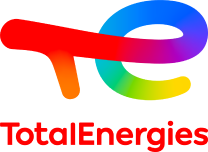EOR (Enhanced Oil Recovery)
11/07/2016
Did you know that only 30 to 40% of the oil contained in reservoirs is extracted? For many years now we've been working on implementing enhanced oil recovery, or EOR, methods to boost our fields’ potential and extend their life. The stakes are huge. Increasing the amount of oil recovered by just one percentage point would work out to an additional 18 months of global consumption.
When a reservoir's natural pressure falls too low to support oil production, water or gas can be injected into the reservoir to maintain pressure. EOR takes it to the next level. We're currently focusing on three methods to increase the oil recovery rate in the short term:
- 1. Polymer flooding.
- 2. Miscible gas injection.
- 3. Surfactant flooding.
Polymer flooding is a highly effective method for improving the recovery of viscous oil. Polymers are added to the water injected into the reservoir. This increases the water’s viscosity and oil displacement on a field scale.
The other two methods work on a pore scale, penetrating the rock to displace trapped oil.
In the second method, miscible gas, such as light hydrocarbons or carbon dioxide, are injected. At the right reservoir pressure and temperatures, the gas acts as a solvent, causing the oil to swell and making it more fluid. It penetrates the rock pores and expels the oil.
Often used in combination with one of the other methods, the third method involves adding surfactants to the water injected. They act in the same way as dish detergent, detaching the oil from the rock.
Other methods still in the R&D stage are also being studied.
If used early enough in a reservoir's life, these methods could enhance oil recovery by up to 15 to 20%. We've achieved promising results in the laboratory and conducted well tests. Between now and 2020 we intend to launch pilot projects in fields in Venezuela, Uganda, Qatar, Nigeria, Angola, the Republic of the Congo and the United Arab Emirates.



